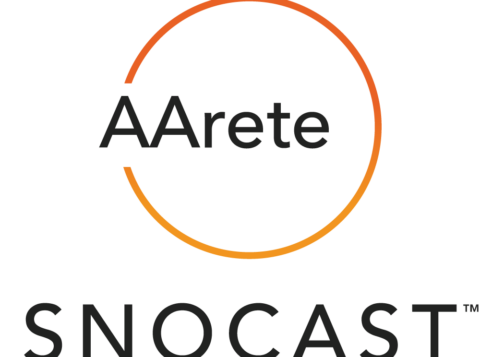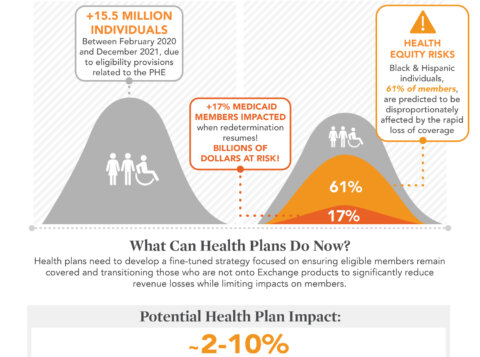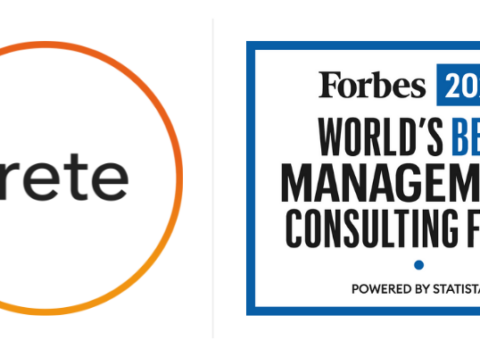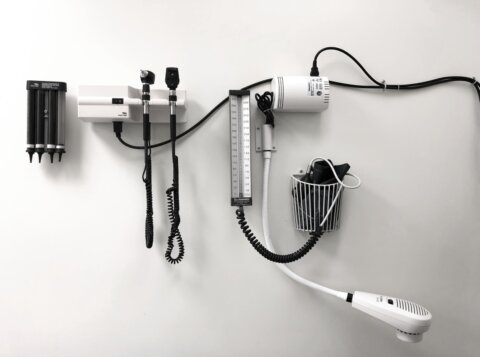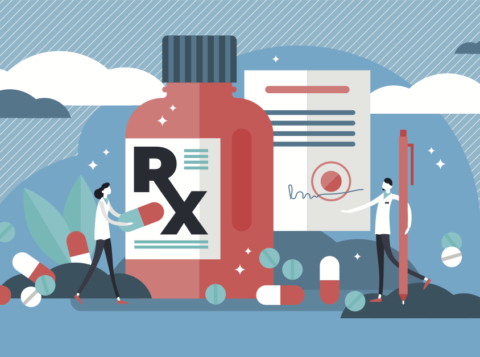Pharma Moves Toward Value-Based Contracting
By: Leslie Lotano-Saba, RPh, MS, Scott Kornhauser and Gary Parker
Originally published on June 22, 2022 in Pharmacy Times
Part 1 of this 4-part series provides a general overview of the trends that are moving payers and pharmaceutical companies in this direction.
The specialty pharmaceutical climate is changing, with specialty pharmaceuticals representing 53% of total US drug expenditures, according to IQVIA.1
With the FDA-accelerated approval pathway tailwinds, this growth trend is projected to continue accordingly.
With 50% of specialty drugs administered under medical benefit versus pharmacy benefit plans, high-cost orphan and rare disease therapies have largely remained outside the gross-to-net bubble, or the money that sits between a manufacturer’s list price for a drug and the net price after rebates and other reductions, which reached $187 billion in 2020, according to the Drug Channels Institute.2
This specialty drug bubble exemption is good for pharma, but for employers, payers, and ultimately patients, it is a growing challenge.
The specialty pharmaceutical climate is changing, with specialty pharmaceuticals representing 53% of total US drug expenditures, according to IQVIA.1
With the FDA-accelerated approval pathway tailwinds, this growth trend is projected to continue accordingly.
With 50% of specialty drugs administered under medical benefit versus pharmacy benefit plans, high-cost orphan and rare disease therapies have largely remained outside the gross-to-net bubble, or the money that sits between a manufacturer’s list price for a drug and the net price after rebates and other reductions, which reached $187 billion in 2020, according to the Drug Channels Institute.2
This specialty drug bubble exemption is good for pharma, but for employers, payers, and ultimately patients, it is a growing challenge.
Pharmaceutical manufacturers no longer have FDA approval as their top concern. Pharma’s growing concern is patient access to high-cost specialty drugs and payer coverage. Payers are increasingly resistant to pay for treatment failures with these newer drugs, which come with premium costs of $200,000 to $2 million per treatment and have limited proof of effectiveness. Yet manufacturers struggle to align network performance with contemplated economic incentives.
Meanwhile, nearly 30% of Americans don’t take their prescribed medications because of high drug prices, according to the Kaiser Family Foundation.3
On average, 9% of prescriptions are abandoned by patients, 5% when prescriptions are free, but 60% when they cost more than $500.
The growing interest in pharmaceutical value-based agreements has also not escaped the attention of the Center of Medicare and Medicaid Services, which has proposed rules that would allow pharma to innovate new value-based models without the constraints of Medicaid best-price rules that previously suppressed this kind of innovation. As a result, pharma company leaders are pushing their organizations to explore value-based contract and program innovation.
Balancing Clinical Performance, Payment, Price, and Value
Three pharmaceutical manufacturers have published innovative product “warranty” programs that guarantee the clinical performance of their oncology products with a money-back guarantee. Such warranty program innovations can be implemented without a value-based contract between pharma and payers or other stakeholders. The product warranty is published much like any other consumer product warranty, with clear conditions and terms for valid claims. These early warranty programs may have measures that simply look for discontinuation of therapy within a specified period as verified by a physician. Other product warranties can be more complicated, with pharma engaging a stop-loss carrier or even creating a captive insurance entity to underwrite risk and manage potential claims for high-cost therapies that may measure total cost of care and outcomes more comprehensively and thus represent the potential for considerably greater financial risk.
As pharma seeks new ways to guarantee clinical performance for these high-cost therapies while preserving margins, consumer and payer pressure is mounting on them to also address alternative payment models. This pressure has already resulted in several examples of alternative payment models, such as a subscription model that charges a population-based subscription fee for unlimited access to a product. Other alternatives might include time/installment payments which could be tied to clinical, financial, and/or process measures. The most interesting model under consideration is the warranty that follows patients as they change employer and/or insurance coverage. The combined clinical warranty and associated prorated costs would follow patients accordingly.
Value-based agreements and programs are capturing pharma’s attention as an alternative to traditional volume-based financial incentives, such as discounts and rebates. Recognition of the opportunity to improve outcomes, lower cost, and share risk through pharmaceutical value-based contracts and programs is growing with payers, as well, as all parties seek to create mutually beneficial strategies to address the burgeoning specialty drug segment. Payers, patients, pharma, and providers must all benefit under a successful value-based model.
Interoperation for Operationalization at Scale
There have been numerous challenges throughout the US health system’s volume to value transformation over the past decade, not the least of which has been the accurate, efficient, and trusted measurement of performance and quality. Frequently, stakeholders have set a low bar for value-based contract design to avoid the challenges of computing complexities and data acquisition required. The administration of these agreements has largely been performed as a retrospective analytic and reporting function. As a result, the optimizing of clinical and financial performance has been constrained to the rearview mirror. Most vocal about this critical flaw, providers increasingly express the need for situational awareness as they take on the practice of clinically integrated and coordinated care essential for optimizing value. These same voices, however, also want to keep operational friction to a minimum.
Specific to pharmaceutical value-based contracting, the issue of scalability often comes up as well. Payers and providers have been resource-sensitive when contemplating the potential implications of hundreds of small populations using high-cost specialty therapies across potentially hundreds of pharma companies. We often hear a frequent refrain of “will the juice be worth the squeeze?” In our practice, we work with clients to efficiently execute advanced analytics that identify the highest value pharmaceutical value-based targets. This approach allows clients to approach pharma proactively with evidence-based, high-value, real-world, requirements, as opposed to reacting to lower-value pharma offerings.
Continuous clinical and financial performance improvement, low friction levels, operational scale, and situational awareness are familiar requirements that have been out of reach for the past decade but for which an attainable future state is emerging at an accelerated pace. The ability to efficiently design, execute, and operationalize complex pharmaceutical value-based agreements in real time is coming into focus. As adoption, interoperability standards, and patient data access legislation accelerate, the opportunity emerges to move from retrospective, traditional, value-based contract administration to real time, with continuous clinical and financial outcomes performance improvement as the driving incentive for all stakeholders.
The market is flush with purpose-built, well-engineered, health care platforms that are deployed to analyze aggregated big population data, identify care gaps, and deliver insights for continuous improvement. The move to real-time from retrospective value-based contract administration requires real-time transactional analytic solutions. The adjudication of in-line care quality and performance, versus claims adjudication post-care, requires interoperations throughout the patient journey. This “360 journey” or member experience solutions approach to data processing is fundamental to complete the volume-to-value transformation.
Path Forward
Gartner’s 2021 Strategic Roadmap for the Real-Time Health System envisioned a collaborative, proactive, situationally aware, and smart health care provider enterprise.4
We can observe the entire health care ecosystem making advances toward this vision. Advances in interoperability, including data accessibility legislation and standards adoption, are creating the foundation for long envisioned, real-time interoperations that will allow transformational leaps in efficiency and quality.
It is imperative that payers, providers, and other entities improve their overall profitability by leaning on data analytics and market intelligence. With the design and implementation of innovative solutions, the focus must remain on improving costs, quality, and revenue, which will require intensive ongoing analysis across various business segments for optimal success and return on investment.
Parts 2, 3 and 4 of this 4-part series will look at connecting pharma value-based contracting to general care and services, interoperability and operationalization, and traditional versus batch retrospective views, along with an approach to adjudicating value versus claims.
References
1. The use of medicines in the U.S. IQVIA. May 27, 2021. Accessed June 21, 2022. https://www.iqvia.com/insights/the-iqvia-institute/reports/the-use-of-medicines-in-the-us#:~:text=Real%20net%20per%20capita%20spending,increased%20only%20%2456%20since%202010.&text=Specialty%20medicines%20now%20account%20for,in%20autoimmune%20and%20oncology%20therapies
2. Fein AJ. Gross-to-net bubble update: net prices drop (again) at six top drugmakers. April 14, 2021. Accessed June 21, 2022. https://www.drugchannels.net/2021/04/gross-to-net-bubble-update-net-prices.html#:~:text=The%20gross%2Dto%2Dnet%20bubble%20keeps%20inflating.,DCI’s%202021%20pharmacy%2FPBM%20report%20
3. Poll: nearly 1 in 4 Americans taking prescription drugs say it’s difficult to afford their medicines, including larger shares among those with health issues, with low incomes and nearing Medicare age. Kaiser Family Foundation. News release. March 1, 2019. Accessed June 21, 2022. https://www.kff.org/health-costs/press-release/poll-nearly-1-in-4-americans-taking-prescription-drugs-say-its-difficult-to-afford-medicines-including-larger-shares-with-low-incomes/
4. Real time health system vision. Gartner. July 13, 2020. Accessed June 21, 2022. https://www.gartner.com/en/documents/3987455









